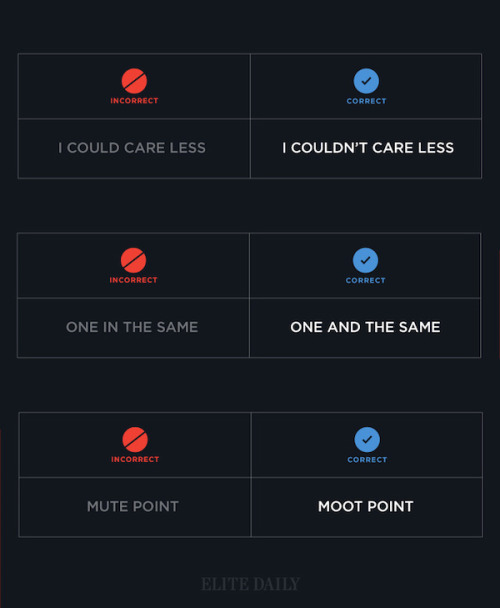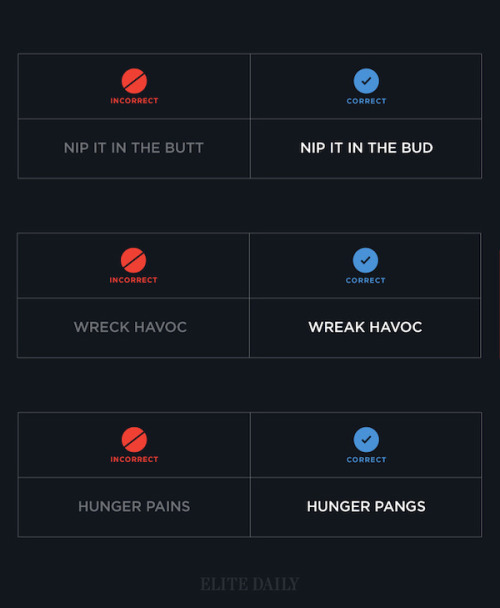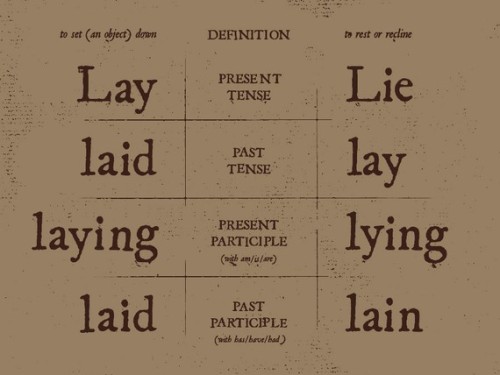Grammar - Blog Posts
I think I just improperly used the English comma please help

Some tips to study!:🎀
1.Set Clear Goals: Break your larger objectives into smaller, specific tasks for each study session. This makes your progress more manageable and keeps you motivated.
2.Create a Study Schedule: Plan your study time in advance and stick to a routine. This helps develop discipline and ensures you cover all the topics you need.
3.Use Active Learning: Instead of just reading or highlighting, actively engage with the material. Try summarizing what you learn, ask yourself questions, or teach the topic to someone else.
4.Take Regular Breaks: Study in short bursts, like 25-30 minutes, followed by a 5-minute break. This method, known as the Pomodoro Technique, helps keep your mind fresh and focused.
5.Stay Organized: Keep your notes, books, and digital files organized. Having a clean and structured workspace helps you focus better and saves time during study sessions.
6.Use Multiple Resources: Don’t rely on one textbook or resource. Combine materials like videos, online courses, or apps to enhance your understanding of the subject.
7.Review Regularly: Revisit your notes frequently. Regular review helps move information from short-term to long-term memory, making it easier to recall during exams.
8.Practice Past Exams or Problems: If possible, work on past exam papers or similar problems. This prepares you for the format and helps identify areas that need more attention.
These tactics can help you stay efficient, organized, and motivated during your studies.


How to Learn a New Language: Simple Tips for Success
Learning a new language can be both fun and challenging. It opens doors to new cultures, experiences, and even career opportunities. If you’re ready to take on this journey, here are some quick tips to help you succeed.
1. Set Clear Goals
Decide why you want to learn the language—whether for travel, work, or personal growth. Having a clear goal will keep you motivated and on track.
2. Immerse Yourself
Surround yourself with the language. Watch movies, listen to music, and read in the language as much as you can. This exposure will help you absorb vocabulary and sentence structures naturally.
3. Practice Speaking Early
Start speaking the language from the very beginning, even if it’s just a few words. Practice with native speakers or use language-learning apps that focus on conversation.
4. Be Consistent
Consistency is key. Study a little every day instead of cramming all at once. Daily practice helps keep the language fresh in your mind.
5. Embrace Mistakes
Don’t be afraid to make mistakes—they’re part of learning. The more you practice, the better you’ll get, so stay positive and persistent.
6. Use Multiple Resources
Try different tools like apps, flashcards, podcasts, and grammar books. Mixing resources keeps learning interesting and well-rounded.
Conclusion
Language learning takes time and effort, but by setting clear goals, practicing daily, and embracing mistakes, you’ll improve steadily. Enjoy the process, and soon, you’ll be able to communicate confidently in a new language!
hey boy don't kill yourself. green's dictionary of slang is available online and allows you to explore 500 years of english vulgarity. you can search by part of speech, source, time period, etymology, and usage. there's a whole category for gay slang. they even have specific citations listed so you can see the exact context for yourself. boy did you know that in 1927 "to kneel at the altar" was slang for "to sodomize"
100 Dialogue Tags You Can Use Instead of “Said”
For the writers struggling to rid themselves of the classic ‘said’. Some are repeated in different categories since they fit multiple ones (but those are counted once so it adds up to 100 new words).
1. Neutral Tags
Straightforward and unobtrusive dialogue tags:
Added, Replied, Stated, Remarked, Responded, Observed, Acknowledged, Commented, Noted, Voiced, Expressed, Shared, Answered, Mentioned, Declared.
2. Questioning Tags
Curious, interrogative dialogue tags:
Asked, Queried, Wondered, Probed, Inquired, Requested, Pondered, Demanded, Challenged, Interjected, Investigated, Countered, Snapped, Pleaded, Insisted.
3. Emotive Tags
Emotional dialogue tags:
Exclaimed, Shouted, Sobbed, Whispered, Cried, Hissed, Gasped, Laughed, Screamed, Stammered, Wailed, Murmured, Snarled, Choked, Barked.
4. Descriptive Tags
Insightful, tonal dialogue tags:
Muttered, Mumbled, Yelled, Uttered, Roared, Bellowed, Drawled, Spoke, Shrieked, Boomed, Snapped, Groaned, Rasped, Purred, Croaked.
5. Action-Oriented Tags
Movement-based dialogue tags:
Announced, Admitted, Interrupted, Joked, Suggested, Offered, Explained, Repeated, Advised, Warned, Agreed, Confirmed, Ordered, Reassured, Stated.
6. Conflict Tags
Argumentative, defiant dialogue tags:
Argued, Snapped, Retorted, Rebuked, Disputed, Objected, Contested, Barked, Protested, Countered, Growled, Scoffed, Sneered, Challenged, Huffed.
7. Agreement Tags
Understanding, compliant dialogue tags:
Agreed, Assented, Nodded, Confirmed, Replied, Conceded, Acknowledged, Accepted, Affirmed, Yielded, Supported, Echoed, Consented, Promised, Concurred.
8. Disagreement Tags
Resistant, defiant dialogue tags:
Denied, Disagreed, Refused, Argued, Contradicted, Insisted, Protested, Objected, Rejected, Declined, Countered, Challenged, Snubbed, Dismissed, Rebuked.
9. Confused Tags
Hesitant, uncertain dialogue tags:
Stammered, Hesitated, Fumbled, Babbled, Mumbled, Faltered, Stumbled, Wondered, Pondered, Stuttered, Blurted, Doubted, Confessed, Vacillated.
10. Surprise Tags
Shock-inducing dialogue tags:
Gasped, Stunned, Exclaimed, Blurted, Wondered, Staggered, Marvelled, Breathed, Recoiled, Jumped, Yelped, Shrieked, Stammered.
Note: everyone is entitled to their own opinion. No I am NOT telling people to abandon said and use these. Yes I understand that said is often good enough, but sometimes you WANT to draw attention to how the character is speaking. If you think adding an action/movement to your dialogue is 'good enough' hate to break it to you but that ruins immersion much more than a casual 'mumbled'. And for the last time: this is just a resource list, CALM DOWN. Hope that covers all the annoyingly redundant replies :)
Looking For More Writing Tips And Tricks?
Check out the rest of Quillology with Haya; a blog dedicated to writing and publishing tips for authors!
Instagram Tiktok
NO ONE knows how to use thou/thee/thy/thine and i need to see that change if ur going to keep making “talking like a medieval peasant” jokes. /lh
They play the same roles as I/me/my/mine. In modern english, we use “you” for both the subject and the direct object/object of preposition/etc, so it’s difficult to compare “thou” to “you”.
So the trick is this: if you are trying to turn something Olde, first turn every “you” into first-person and then replace it like so:
“I” → “thou”
“Me” → “thee”
“My” → “thy”
“Mine” → “thine”
Let’s suppose we had the sentences “You have a cow. He gave it to you. It is your cow. The cow is yours”.
We could first imagine it in the first person-
“I have a cow. He gave it to me. It is my cow. The cow is mine”.
And then replace it-
“Thou hast a cow. He gave it to thee. It is thy cow. The cow is thine.”
Apparently a lot of people get dialogue punctuation wrong despite having an otherwise solid grasp of grammar, possibly because they’re used to writing essays rather than prose. I don’t wanna be the asshole who complains about writing errors and then doesn’t offer to help, so here are the basics summarized as simply as I could manage on my phone (“dialogue tag” just refers to phrases like “he said,” “she whispered,” “they asked”):
“For most dialogue, use a comma after the sentence and don’t capitalize the next word after the quotation mark,” she said.
“But what if you’re using a question mark rather than a period?” they asked.
“When using a dialogue tag, you never capitalize the word after the quotation mark unless it’s a proper noun!” she snapped.
“When breaking up a single sentence with a dialogue tag,” she said, “use commas.”
“This is a single sentence,” she said. “Now, this is a second stand-alone sentence, so there’s no comma after ‘she said.’”
“There’s no dialogue tag after this sentence, so end it with a period rather than a comma.” She frowned, suddenly concerned that the entire post was as unasked for as it was sanctimonious.
Saw a debate about using s' or s's at the end of a character's name whose name ends in s to show possessive.
My conclusion: it depends on the style guide you're using, and whether you are an ancient prophet (???) holding a stick that belongs to Moses or a friend of Moses holding a stick that belongs to Moses. Also, just be consistent.
I will only use s' and I will die on this hill.
Writing Tips
Punctuating Dialogue
✧
➸ “This is a sentence.”
➸ “This is a sentence with a dialogue tag at the end,” she said.
➸ “This,” he said, “is a sentence split by a dialogue tag.”
➸ “This is a sentence,” she said. “This is a new sentence. New sentences are capitalized.”
➸ “This is a sentence followed by an action.” He stood. “They are separate sentences because he did not speak by standing.”
➸ She said, “Use a comma to introduce dialogue. The quote is capitalized when the dialogue tag is at the beginning.”
➸ “Use a comma when a dialogue tag follows a quote,” he said.
“Unless there is a question mark?” she asked.
“Or an exclamation point!” he answered. “The dialogue tag still remains uncapitalized because it’s not truly the end of the sentence.”
➸ “Periods and commas should be inside closing quotations.”
➸ “Hey!” she shouted, “Sometimes exclamation points are inside quotations.”
However, if it’s not dialogue exclamation points can also be “outside”!
➸ “Does this apply to question marks too?” he asked.
If it’s not dialogue, can question marks be “outside”? (Yes, they can.)
➸ “This applies to dashes too. Inside quotations dashes typically express—“
“Interruption” — but there are situations dashes may be outside.
➸ “You’ll notice that exclamation marks, question marks, and dashes do not have a comma after them. Ellipses don’t have a comma after them either…” she said.
➸ “My teacher said, ‘Use single quotation marks when quoting within dialogue.’”
➸ “Use paragraph breaks to indicate a new speaker,” he said.
“The readers will know it’s someone else speaking.”
➸ “If it’s the same speaker but different paragraph, keep the closing quotation off.
“This shows it’s the same character continuing to speak.”
A good thing to remember when writing: the first letter of the first word of a sentence is always capitalized. Always. Secondly, “said” is almost never capitalized. This:
“Hey.” Said the guy.
should nEVER EVER HAPPEN. “Said” pretty much never ever starts a sentence and certainly never with quotes or dialogue.
USING SAID: “Hey,” said the guy.
Any time you would put a period at the end of the quote, but it is followed by a dialogue tag, replace the period with a comma.
If the quote ends with a question mark or exclamation mark, the capitalization remains the same: “Hey!” said the guy.
ONLY, ONLY EVER, USE A PERIOD IF THE DIALOGUE TAG (THAT’S WHAT SAID AND ALL THOSE OTHER WORDS ARE) COMES BEFORE THE QUOTE: The guy said, “Hey.”
THIS HAS BEEN A PSA
advice
when writing things, u gotta add a semicolor, a hyphen, and an apostrophe in some of the places.
tho why don't they do it more




